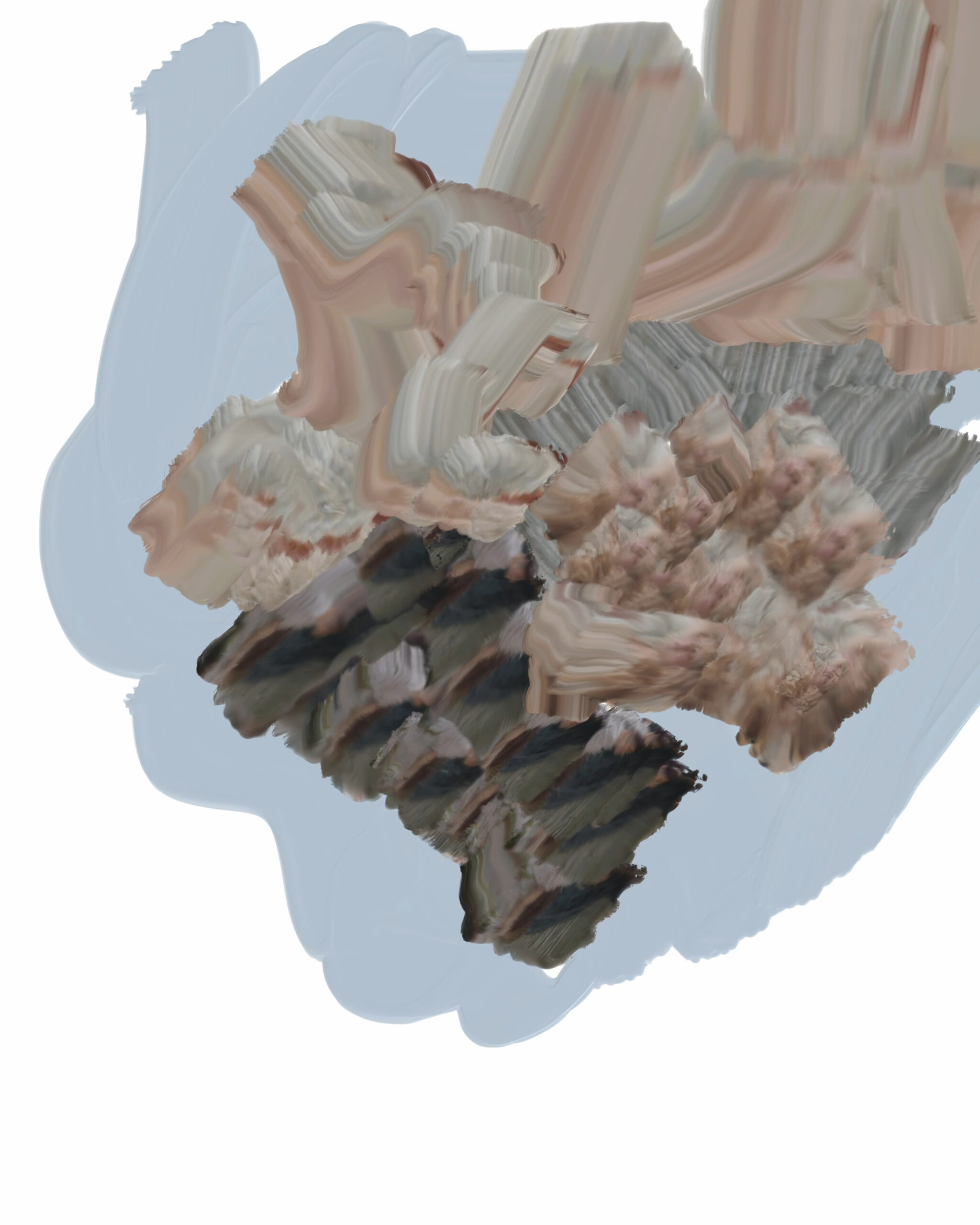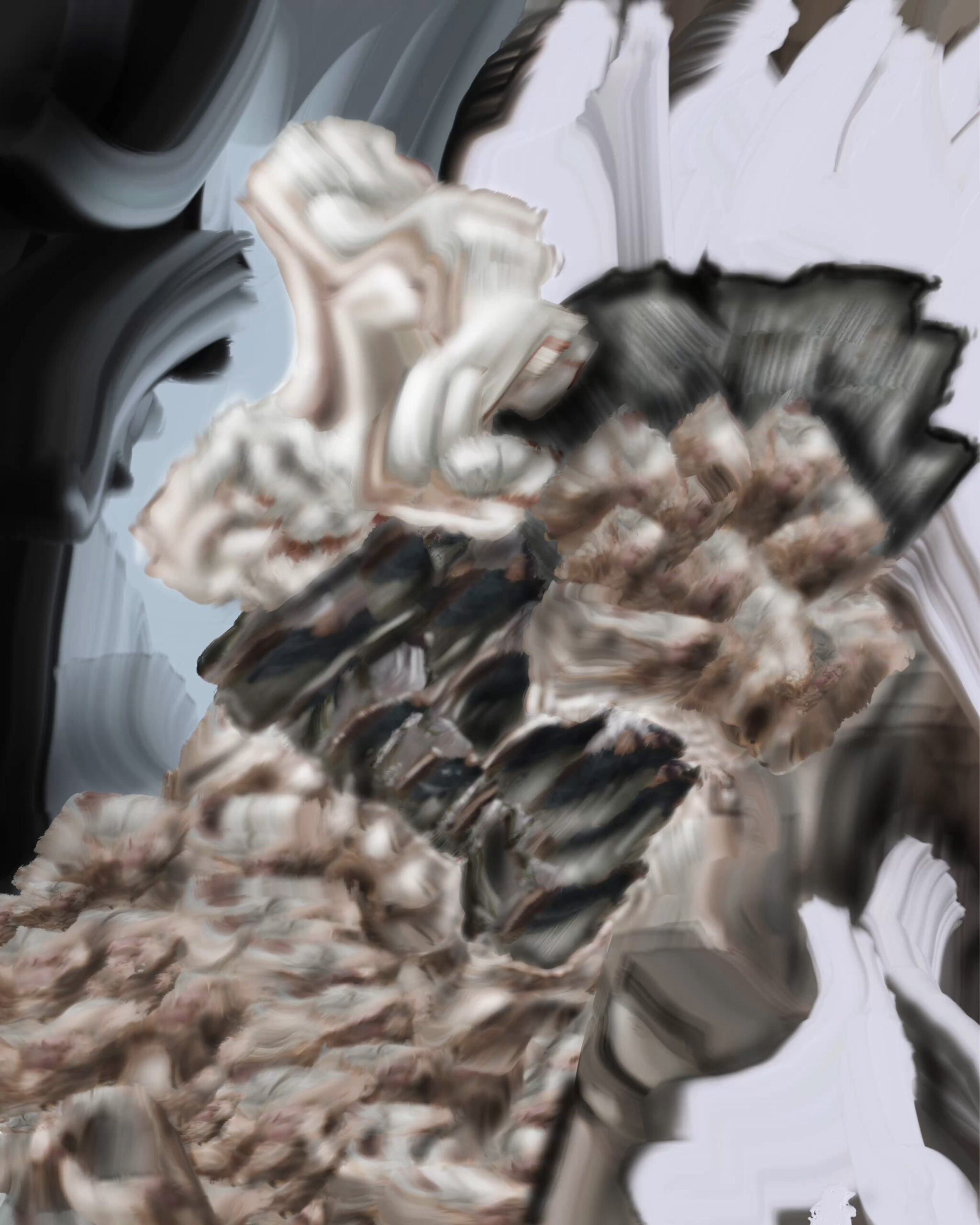Work In Progress 3
Work In Progress
Work in Progress – Digital Fragments 420
Digital Fragments 420, a work-in-progress, draws on an unexpected source: The Women of Amphissa by Lawrence Alma-Tadema. I deliberately borrowed the palette from this late academic painting—ashen whites, rosy browns, steel blues—and re-injected it into a fully abstract composition.
A dynamic emerged early on: an almost organic void at the centre, around which the forms seem to drift or disintegrate. This visual hollow interests me — it acts as a counterpoint, a negation of the full.
Another phenomenon holds my attention: the bands of white at the bottom of the image. They play an ambiguous role — at times a plane of light, at other times a surface of rejection. Depending on the viewer’s gaze, they can shift toward an overexposed background, creating an unstable spatial illusion.
The more I look at this piece, the more I sense an underlying chaos. Nothing feels fully resolved. Fragmented forms orbit, hesitate, unravel. The white areas themselves seem poised to invade the space or withdraw abruptly. This tension feels essential. It also unexpectedly echoes specific passages in Borduas’ work, not as a quotation, but in the way white can act as a living, breathing material within the pictorial field.
Reflection in progress
This painting by Lawrence Alma-Tadema was not a direct reference when I began this fragment. However, it resurfaced during a recent reading, and I found myself drawn back to its textures — the veils, the fabrics, the skin rendered with such precision. I wondered whether these tactile qualities might serve as a starting point for an abstract exploration.
I must also admit: the technical mastery of Alma-Tadema remains impressive. Yet my intent was not to replicate or quote. Rather, I sought to transpose the sensory density of those textures — their softness, their layered presence — into a new visual language. Through this fragment, I am testing how much of that material resonance can survive when the figurative scaffolding is removed.
The white already speaks to you — listen to what it refuses, and to what it offers. It is neither background nor form: it is a threshold. If it repels, let it repel fully. If it draws in, let it draw in. The central void, the underlying chaos, the bands of white — all these are part of the same inverted breath. Let the instability breathe. Borduas is not a model, but a reminder that chaos itself can be a material.
— Ego Klar

